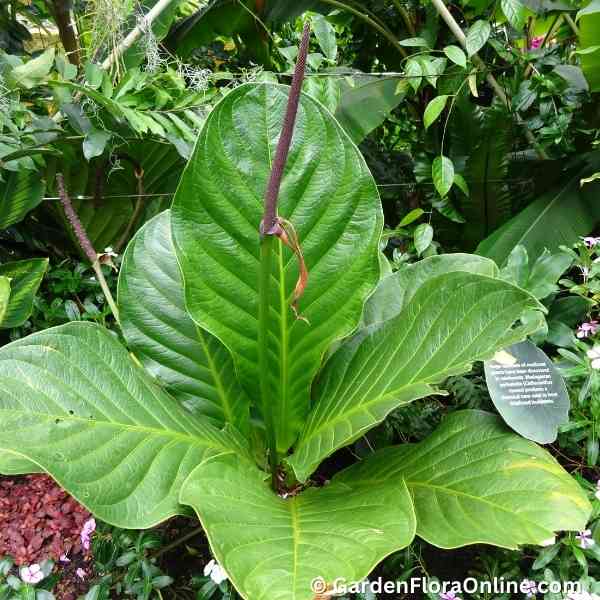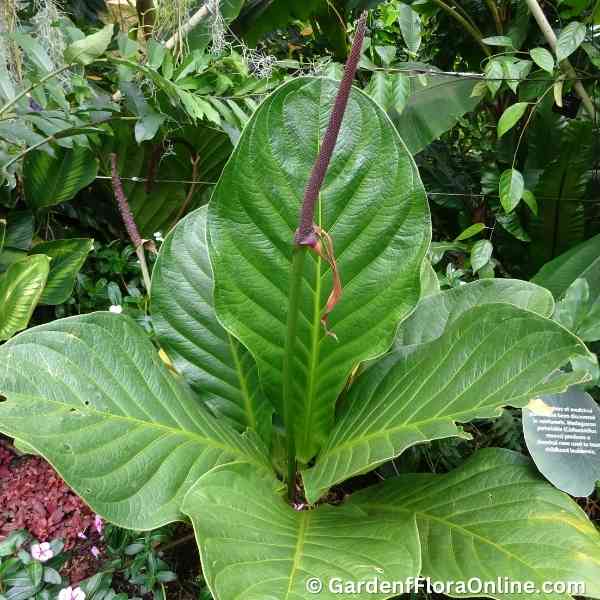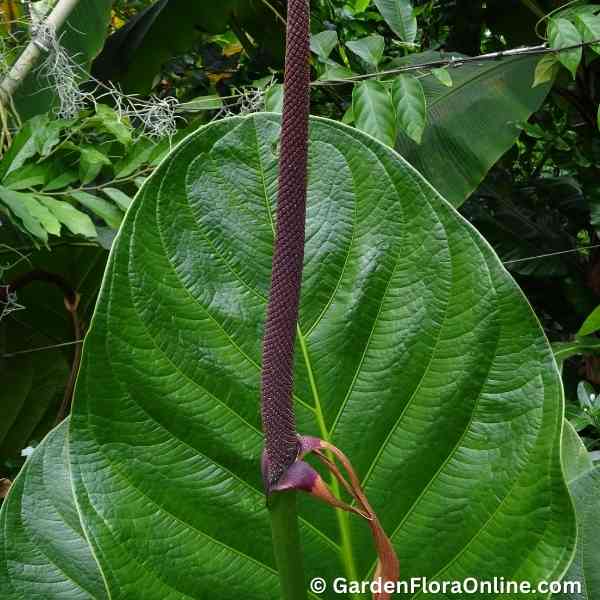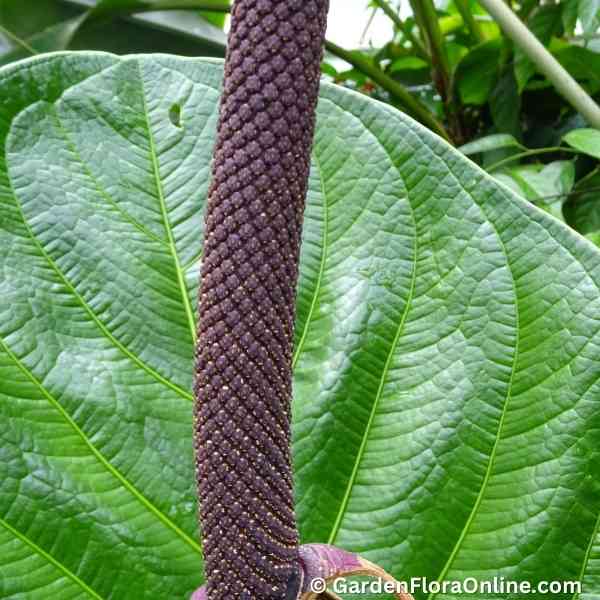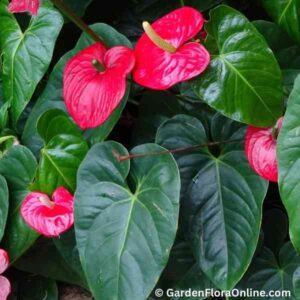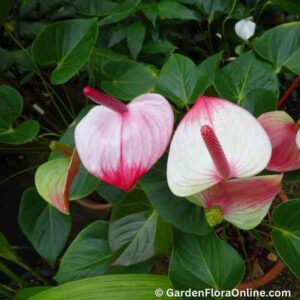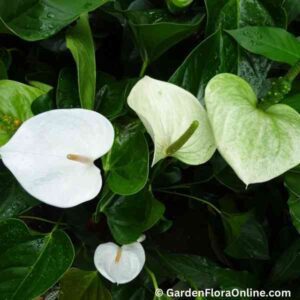Anthurium bonplandii subsp. guayanum (Araceae)
This plant is primarily terrestrial but can occasionally grow epiphytically. Its stems reach up to 20 cm in length, with short internodes and dense, spreading roots, some of which ascend. The leaves are erect to arching, coriaceous, and oblanceolate to obovate, measuring up to 140 cm long and 65 cm wide, with undulate margins. The upper surface of the leaves is semiglossy dark green, while the lower surface is paler and may have pustules or glandular punctations. The inflorescences are striking, often as long as or longer than the leaves, with peduncles reaching up to 96 cm, green but tinged with maroon or purple. The spathes are pale to medium green, sometimes suffused with purple, and oblong-lanceolate in shape. The spadices, initially green, turn reddish to purple or purple-brown at anthesis, bearing small rhombic flowers arranged in spirals. These flowers have yellow anthers and white pollen. Fruiting results in reddish-purple obovoid berries, which are white at the base and measure 6-10 mm long. Each berry contains 1-2 seeds that are reddish-violet, ellipsoid, and attached to the carpel wall by a thick strand of fibers (after Croat, 1991).
Cultivation: It thrives in semi-shaded conditions, requiring a moderate yet consistent water supply to maintain soil moisture without waterlogging. The plant is suited for warm, humid environments with temperatures ranging from 60–80°F and benefits from bright, indirect light while avoiding direct sunlight.vIn cooler climates, it can be grown in pots using a high-quality potting mix with good drainage. During colder months, relocating the plant to a warm, humid indoor space, such as near a bright window, is essential to protect it from cold drafts and maintain its health. A humidifier can be helpful in drier environments. When temperatures warm up, the plant can be placed outdoors in a semi-shaded area like a patio or deck. To ensure optimal growth, avoid allowing the soil to dry out excessively or exposing the plant to prolonged cold conditions. Proper care will enhance its striking ornamental appearance, making it a popular choice for gardeners.
Etymology: The genus name Anthurium is derived from the Greek words anthos, meaning “flower,” and oura, meaning “tail,” referring to the spadix, a tail-like structure characteristic of the flowers in this genus. The specific epithet bonplandii honors Aimé Bonpland, a French botanist and explorer. The subspecies name guayanum comes from the Latinized form of “Guayana,” referring to the region in South America where this plant is native.

